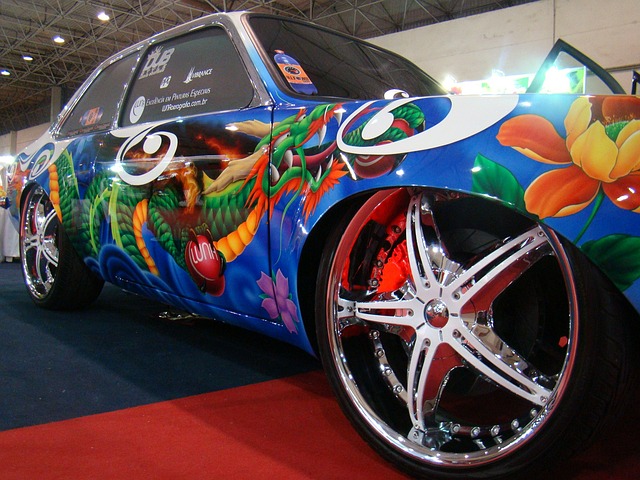Classic car insurance is tailored to meet the unique needs of vintage and collectible vehicle owners, offering specialized coverage that often costs less than regular auto insurance. However, determining the premiums for such policies involves a distinct set of factors. Insurers consider elements unique to classic cars and their usage, ensuring that the policy aligns with the value, condition, and risk associated with these prized vehicles. Here’s a breakdown of how classic car insurance premiums are calculated.
Key Factors Influencing Premiums
1. Agreed Value of the Vehicle
One of the defining features of classic car insurance is the use of an agreed value system. This means that you and your insurer agree on the car’s value at the start of the policy. The agreed value impacts your premium in the following ways:
- Higher-value vehicles result in higher premiums due to the increased cost of repair or replacement.
- Accurately appraising your car’s worth ensures fair pricing and appropriate coverage.
For more details on agreed value policies, visit What Are the Eligibility Requirements for Classic Car Insurance?.
2. Vehicle Age and Type
The age and classification of your vehicle play a significant role in premium calculations:
- Vintage Cars: Typically over 45 years old, these cars may qualify for lower premiums if they are well-maintained and rarely driven.
- Classic Cars: Vehicles 20-45 years old often fall into a middle tier of premiums.
- Modern Collectibles: Limited-edition or rare modern cars may have higher premiums due to their value and desirability.
3. Usage and Mileage Limits
Classic car insurance is designed for vehicles that are not used for daily commutes. Policies often impose mileage restrictions, such as:
- Capping annual mileage at 5,000 miles or less
- Lower premiums for vehicles driven only to car shows or for pleasure
Exceeding these limits could result in higher premiums or even disqualification from the policy.
4. Storage Conditions
How and where you store your classic car significantly affects your premium:
- Secure storage, such as a locked garage or specialized facility, reduces premiums.
- Outdoor or unsecured storage increases the risk of theft or damage, leading to higher costs.
5. Owner’s Driving Record
A clean driving record is crucial for maintaining low premiums:
- Insurers review your history for accidents, traffic violations, and claims.
- Safe drivers typically qualify for discounts, while high-risk drivers face increased rates.
6. Membership in Car Clubs
Many insurers offer discounts to members of recognized car clubs. Membership demonstrates your commitment to maintaining and preserving your vehicle, which insurers view as a lower risk.
7. Location
Your geographic location impacts your premiums based on:
- Crime rates: Higher rates of theft or vandalism increase premiums.
- Weather conditions: Areas prone to natural disasters may lead to higher costs.
Specialized Coverage Options
Premiums may also vary based on additional coverage options, including:
- Roadside Assistance: Designed for classic cars, these services ensure safe towing and repairs.
- Spare Parts Coverage: Protects rare or expensive spare parts stored for future repairs.
- Event Coverage: Provides protection during car shows or exhibitions.
These tailored options add value but can increase your overall premium.
Real-Life Example: Calculating Premiums for a Classic Car
A friend of mine recently insured his 1970 Dodge Challenger. The agreed value was set at $75,000 after a professional appraisal. He stored the car in a locked garage and drove it only for weekend leisure and car shows, keeping annual mileage below 3,000 miles. Thanks to his clean driving record and membership in a national car club, his premium was significantly reduced, even with additional roadside assistance coverage.
Comparing Classic Car and Regular Auto Insurance Premiums
Classic car insurance is often less expensive than regular auto insurance because:
- Classic cars are driven less frequently, reducing accident risk.
- Owners typically take better care of these vehicles.
For a detailed comparison, explore How Is Classic Car Insurance Different from Regular Auto Insurance?.
Tips to Lower Classic Car Insurance Premiums
If you want to reduce your premiums, consider these strategies:
- Increase Your Deductible: Opt for a higher deductible to lower monthly costs.
- Bundle Policies: Combine classic car insurance with other policies, such as homeowners or regular auto insurance, to receive discounts.
- Limit Mileage: Stick to the agreed mileage cap to maintain lower rates.
- Improve Storage Conditions: Invest in secure, weather-resistant storage.
- Maintain a Clean Driving Record: Avoid accidents and traffic violations to qualify for safe driver discounts.
The Importance of Regular Policy Reviews
As your car’s value changes or your driving habits shift, it’s essential to review your policy regularly. Update your agreed value, reassess coverage options, and explore new discounts to ensure your insurance remains cost-effective and comprehensive.
Classic car insurance premiums are calculated based on various factors, including the vehicle’s agreed value, storage conditions, and usage patterns. By understanding these elements and tailoring your policy to fit your needs, you can secure affordable coverage while preserving the value of your cherished vehicle. Regular reviews and proactive measures can further optimize your insurance experience, allowing you to enjoy your classic car with confidence and peace of mind.



